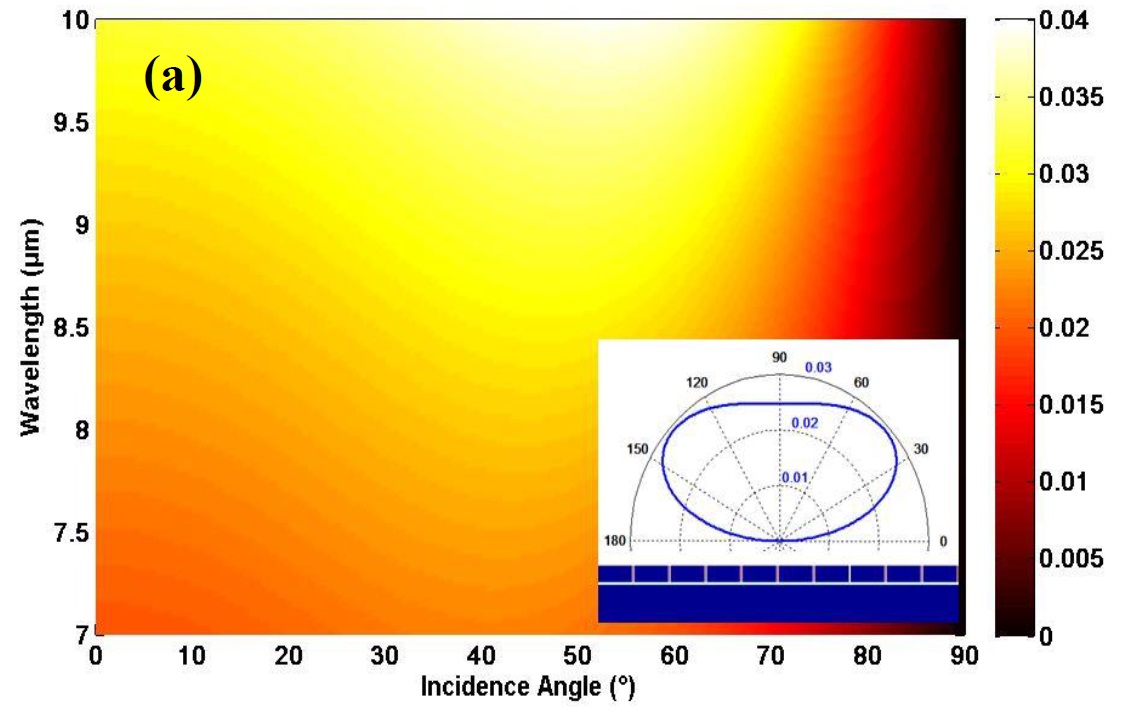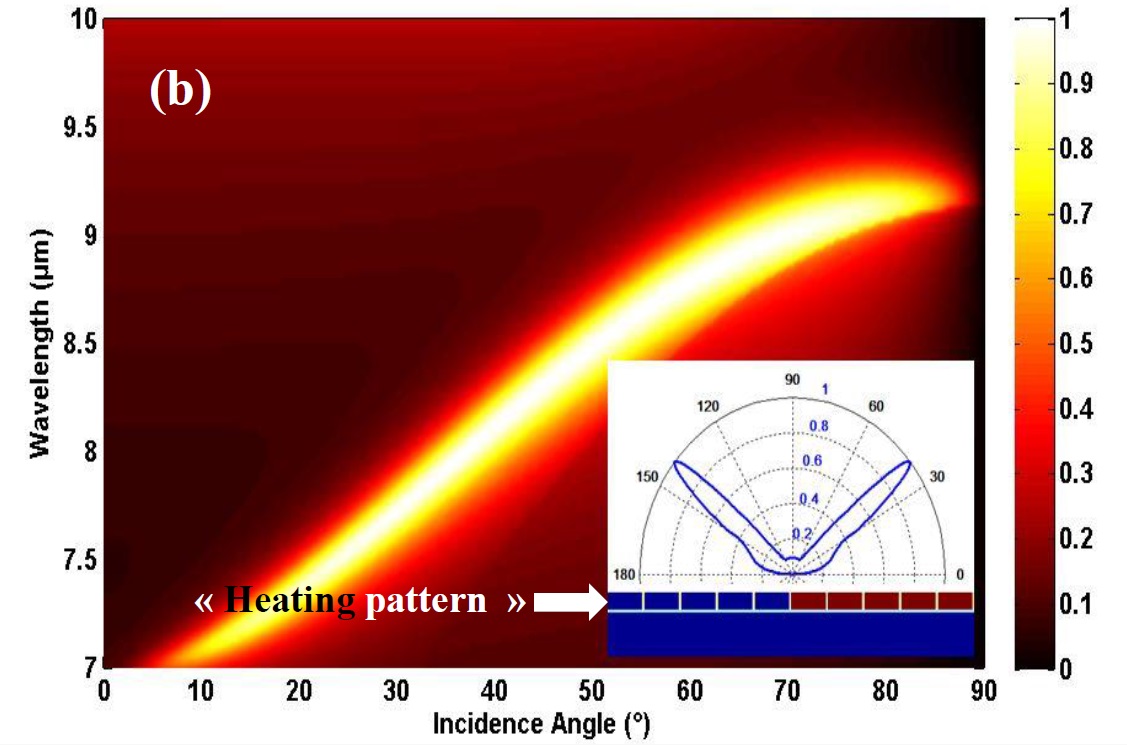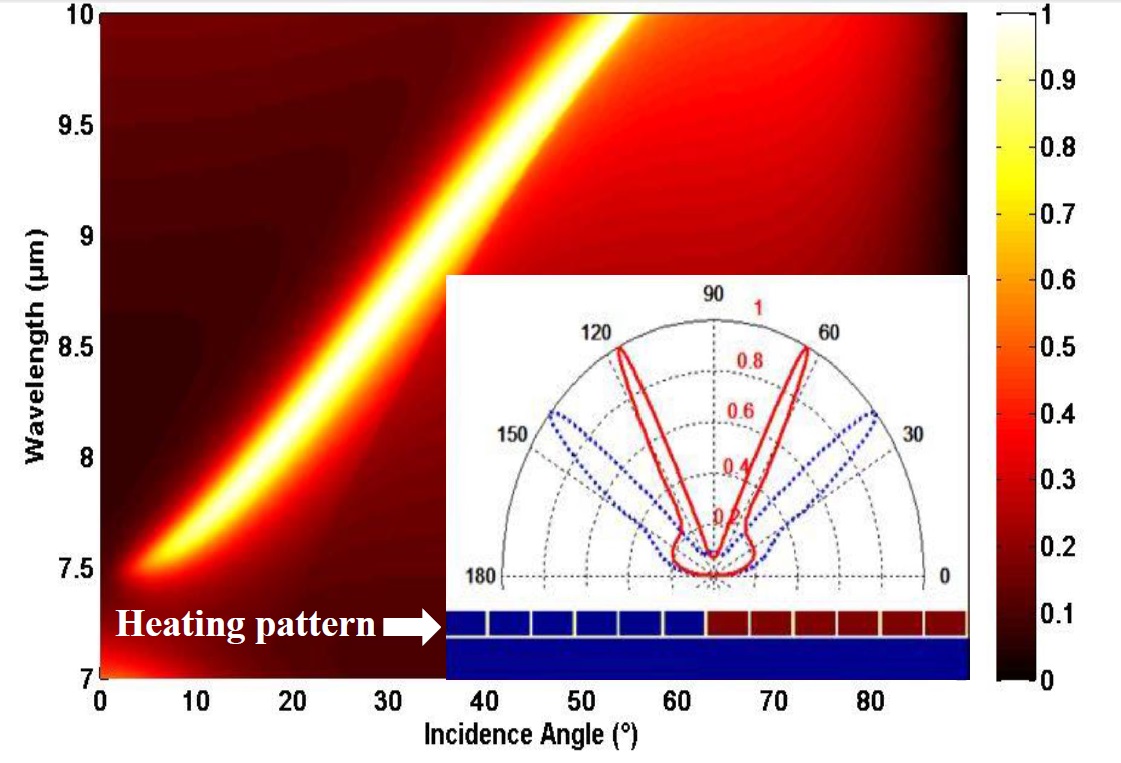Switchable directional infrared radiation source
Référence
05425-02
Mots-clés
Infrared lamp, Switchable lamp, Directional IR Source, Heat management
Statut des brevets
French priority patent application filed on November the 30th, 2012 and entitled “Source de rayonnement infrarouge directionnelle commutable.”
Inventeurs
Philippe BEN-ABDALLAH
Henri BENISTY
Mondher BESBES
Anne-Lise COURTOT
Statut commercial
Exclusive or non-exclusive license
Laboratoire
Laboratoire Charles Fabry (LCF, UMR 8501, in Palaiseau, France
Description
CONTEXT
Based on the thin film coating and structuring of metal oxides, this innovation can provide a directive IR emission with radiation rate control.
TECHNICAL DESCRIPTION
This novel infrared (thermal) source is composed from periodically patterned MIT (Metal Insulator Transition) material with a crystalline and amorphous phase. These two phases allow two functioning modes:
-
Emission off : non emissive state or low emissive state (Figure (a))
-
Emission on: directional with high emissivity state (Figure (b) and Figure (b’))
The necessary time to switch from one functioning mode to another is around one microsecond.
This infrared (heating) source allows :
-
For a given angle, low range infrared emission spectra in which the mean frequency could be easily controlled by changing the period of surface grating cf Figure (b) and Figure (b’).
-
For a given wavelength, the emission angle could be easily controlled through the period of surface grating cf Figure (b) and Figure (b’).
-
Reversible microsecond switching from one functioning mode to another. This functionality could be used to control the heat transfer and radiation rate.



Figure : TM-polarized emissivity of the VO2-source in (a) its purely crystalline (dark blue) non-emittingphase and (b) in its hybrid (crystalline-amorphous) phase where the amorphous phase forms a surface grating of period P = 4.5 μm (10 unit cells of 450 nm length each) (b’) in its hybrid (crystalline-amorphous) phase where the amorphous phase forms a surface grating of period P = 5.4 μm (12 unit cells of 450 nm length each). The inset shows the structure of one period of the source and its emission pattern at 8.5 μm.
DEVELOPMENT STAGE
Promising results were obtained using computer simulation. No difficulties of production were pointed out. A demonstrator could be provided during the first semester of 2015.
BENEFITS
This source allows to:
- Control the radiation rate
- Directive radiation for a given wavelength
- Changing the emission wavelength for a given angle
- Changing the angle of emission for a given wavelengt
INDUSTRIAL APPLICATIONS
By coating and structuring the surface of heat sources the IR emission of these surfaces can be controlled. Applications such as heat management in satellites and flip-chip/ 3D packaging are possible. For these applications, better heat management can open the possibility for a more compact integration.
This invention could possibly have an application for other applications such as :
-
active thermal management of electronic systems,
-
smart heating technologies (household heaters….),
-
industrial process control for chemistry and welding (plastic),
-
in the food processing industry (ovens, drying, Freeze-drying…),
-
infrared source for gas spectroscopy analyses and
-
infrared source.
For further information, please contact us (Ref 05425-02)